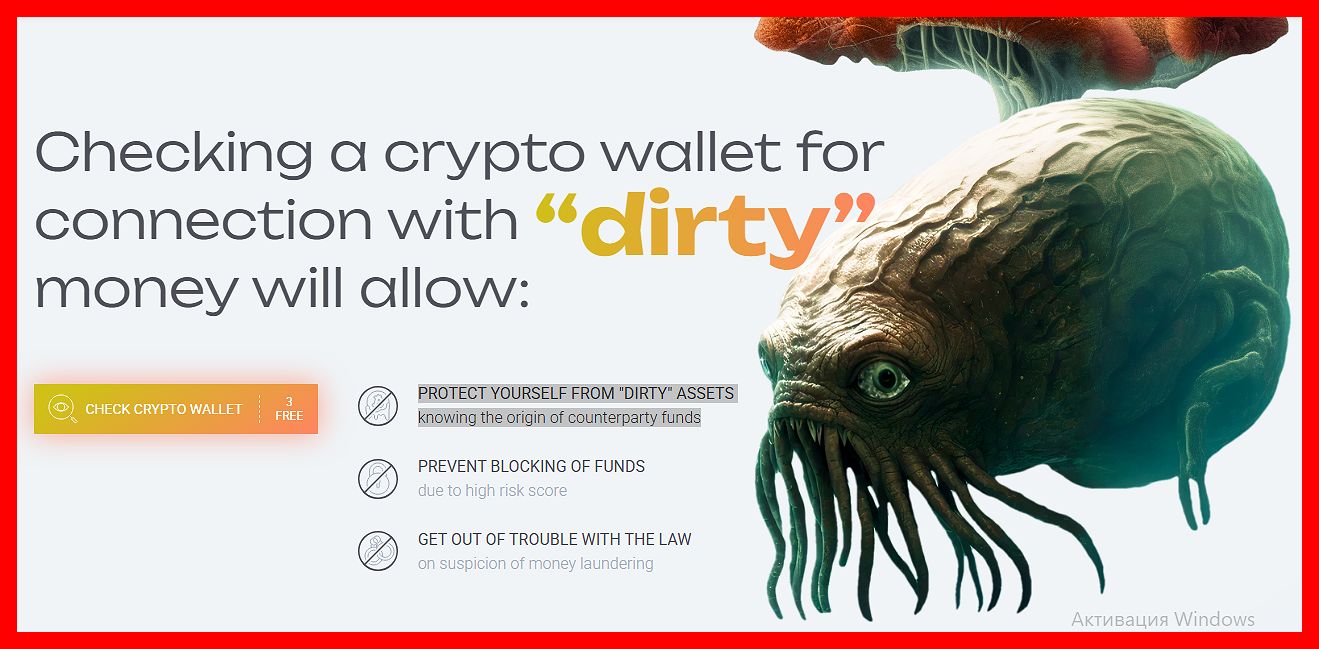USDT crypto Wallet Freezing: Why is this happening with tether?
Tether Freezes Millions in USDT: Why It Happens and How to Unfreeze Your Cryptocurrency on a Crypto Exchange
The stablecoin Tether (USDT) , one of the most popular digital assets with a market cap exceeding $80 billion, can be frozen at the issuer’s discretion by Tether Limited. Unlike decentralized cryptocurrencies, USDT has built-in control mechanisms that allow the company to block access to tokens at the smart contract level.
To learn more about cryptocurrency trends, tools, and guides, visit BitCryptoNova – your trusted crypto blog
This means that even if you store your USDT in a wallet, you may suddenly lose the ability to send or withdraw funds , especially if your address was linked to suspicious transactions in the past. In this article, we will explore:
- How USDT freezing works,
- Common reasons for freezes,
- A real-world case involving Garantex,
- Statistics on frozen addresses,
- Who has the power to freeze your tokens,
- What to do if your USDT is blocked,
- And most importantly — how to reduce the risk of losing money.
This guide is designed to help cryptocurrency users understand how tether freezes crypto , what causes a frozen USDT account , and how to possibly unfreeze your crypto on a crypto exchange .
How does Tether USDT cryptocurrency freezing work?
If you’re dealing with USDT on the Ethereum or Tron networks, understanding that Tether may freeze your assets is crucial. When USDT gets locked due to compliance issues or security reasons, users face barriers to their liquidity.
Understanding how to unfreeze funds requires knowledge of the resolution process. Popular exchanges like Bittrex may freeze assets if they detect suspicious activity. To regain access to your funds, you must follow compliance procedures, including Know Your Customer verification.
The platform’s security measures protect users’ holdings tied to US dollar fiat currency. If a freeze was due to compliance requirements, you’ll need to verify your account with necessary documents. This helps exchanges meet legal and regulatory requirements while minimizing risks associated with digital assets.
Tether uses a centralized approach to issuing and managing its tokens, which makes them vulnerable to external control. One of the key mechanisms is the use of smart contracts with administrative controls , allowing the company to “pause” or “remove” tokens from specific addresses.
The typical freezing process includes:
- Suspicious Activity Detection: Transaction analysis is performed using specialized services such as:
- Chainalysis
- TRM Labs
- Elliptic
- CipherTrace (acquired by Mastercard)
These platforms track fund movements and can detect links to fraud, phishing scams, money laundering, illegal platforms, or OFAC-sanctioned jurisdictions.
- Blacklisting Addresses: If an address received “dirty” tokens, it is added to a blacklist, making all tokens on that address unavailable .
- Token Freeze: Tether Limited then executes a
freezeAccountcommand within the smart contract, which blocks further operations from that address.
Important: Even if you did nothing illegal, but received tokens that previously passed through restricted addresses, your funds may still be frozen. This often leads to frozen cryptocurrency accounts without user consent.
Real-World Example: The Garantex Case (March 2025)
In March 2025, Tether Limited carried out one of the largest-ever mass freezes of USDT. The company blocked over $28 million worth of USDT stored in wallets belonging to the Russian crypto exchange Garantex , after it was placed on sanction lists by both the U.S. and EU for AML/KYC violations and potential involvement in money laundering.
Likely Reasons for the Freeze crypto:
- Garantex served users from sanctioned regions.
- The platform failed to implement sufficient KYC procedures.
- Some transactions were linked to illicit financial activity.
Consequences for Users:
- All Garantex users lost access to their USDT holdings .
- The exchange temporarily suspended operations to resolve the issue.
- Users faced total loss of access to their funds.
- Trust in centralized stablecoins, especially stablecoin issuer Tether , declined sharply.
This event served as a powerful warning: law-abiding users can also lose access to funds if they are tied to tainted transaction histories.
USDT Freezing Statistics (2022–2024)
According to data from Dune Analytics, the number of frozen addresses and the total volume of locked funds has steadily increased:
📈 Trend is clear: The increase in freezes directly correlates with growing regulatory pressure, especially in anti-money laundering (AML) and customer identification (KYC). Companies are increasingly cooperating with authorities to comply with regulations and avoid legal consequences.
These tether freezes reflect a broader trend: crypto exchanges and stablecoin issuers are proactively working with law enforcement agencies and regulators to ensure compliance.
Common Reasons for USDT Freezing
- Phishing, hacking, or scams
Tokens involved in phishing schemes, breaches, or scam projects may be blacklisted. - Violation of AML/KYC requirements
Lack of proper user verification can lead to automatic blocking. - For detailed crypto trading strategies and risk management, see Crypto Trading Orders, Types, Use Cases, and Strategies.
- Use of crypto mixers
Platforms like Tether Cash anonymize transactions and often fall under sanctions. - Transactions via unregulated platforms
“Gray” P2P exchanges that don’t follow KYC rules increase the risk of receiving tainted tokens. - Links to OFAC-sanctioned countries or individuals
Receiving tokens that passed through sanctioned territories (e.g., Iran, North Korea) puts you at risk. - System monitoring errors
Sometimes freezes occur due to technical glitches or false positives from analysis algorithms.
In many cases, users are unaware of any wrongdoing yet find themselves unable to access their digital assets. When a frozen USDT situation occurs, regaining access is rarely successful unless the reason for the freeze is clarified and resolved with the wallet provider or exchange support team.
Who can frozen crypto usdt?
The primary authority to freeze funds lies with Tether Limited , as the company controls the USDT smart contracts. However, influence also comes from government bodies, including:
- OFAC (U.S. Treasury’s Office of Foreign Assets Control)
- FATF (Financial Action Task Force)
- OLAF (European Anti-Fraud Office)
Tether often follows directives from these organizations to avoid legal repercussions. Thus, many actions taken by Tether are responses to regulatory pressure.
Interesting Fact: This level of control does not exist in fully decentralized projects , such as ETH, BTC, or DAI, where there is no central issuer.
Tether’s ability to freeze tokens is built into the Ethereum-based USDT and Tron-based USDT smart contracts, allowing the issuer to take action depending on the reason for the freeze.
What Happens When Your Wallet Is Frozen?
If your USDT is blocked, you may face the following consequences:
- Complete loss of access to your funds
- Refusal of service on most platforms
- Lengthy and largely ineffective unfreezing process
- Possible account suspension on exchanges without prior notice
Important: Unfreezing is only possible in exceptional cases, such as proving you accidentally received tainted funds. Most users find their requests ignored or receive generic responses from support teams.
Even users who followed terms of service and stored their tokens in cold storage may be surprised to see their account frozen due to indirect exposure to illicit activities.
How to Try to Unfreeze USDT
Although the process is complex and rarely successful, here are steps you can take:
- Contact platform support or reach out to Tether directly.
- Complete full KYC/AML verification.
- Provide documents confirming the legitimacy of the funds’ source.
- Use blockchain explorers to verify transaction history.
- Be prepared to submit counterparty info, IP addresses, and other metadata.
Practice shows that recovery chances are low unless the freeze resulted from a technical error.
Tip: You may also consult with lawyers specializing in cryptocurrency regulation, especially if the amount is significant.
Depending on the reason for the freeze, you may need to prove your identity, explain the transaction history behind your digital currency, and show that you are not violating AML laws, KYC policies, or OFAC restrictions.
How to Avoid Freezes and Protect Your Funds
1. Verify USDT History Before Accepting
- Use AML platforms (e.g., Chainalysis, Crystal Blockchain)
- Avoid tokens from unknown or risky sources
2. Avoid Unverified P2P Exchanges
- Choose reliable and licensed platforms
- Use built-in exchange tools instead of direct transfers
3. Avoid “Gray” Exchanges and Wallets
- Store coins on regulated exchanges and trusted wallets (Trust Wallet, SafePal, BRD, etc.)
4. Don’t Use Mixers or Anonymizers
- They violate many regulators’ policies and automatically trigger alerts
5. Diversify Stablecoins
- Keep some funds in decentralized alternatives: DAI, sUSD, algorithmic stablecoins
- Note that even USDC (Circle’s centralized stablecoin) can also be frozen
6. Follow Platform Rules
- Update KYC regularly
- Don’t attempt to circumvent restrictions
For example, if you’re storing Ethereum-based USDT or Tron-based USDT, make sure the addresses aren’t flagged for prior breaches. Always check your transaction history and stay informed about legal investigations affecting your digital currencies.
Safer Stablecoin Alternatives to USDT
If you want to avoid freezing risks, consider decentralized alternatives to USDT:
For example, DAI runs on Ethereum and is managed by the MakerDAO protocol. It has no central issuer and no mechanism exists to block individual addresses .
Safety Tips for Using USDT
- Use AML scanners before accepting tokens
- Avoid peer-to-peer trading with strangers
- Don’t use public wallets on gray exchanges
- Don’t accept tokens from poorly rated exchanges
- Regularly check your address status via blockchain explorers
- Move large balances to verified wallets
- Use cold wallets for storage
- Review token usage policies from issuers
Staying proactive and understanding how tether freezes crypto can help you protect your millions in USDT. If your account is frozen, even with identity verification and customer support contact, regaining access may be impossible — especially when USDT addresses are blacklisted due to links with illegal activities.
Conclusion
- USDT remains vulnerable to freezes due to its centralized nature.
- Any transaction involving “tainted” USDT can result in losing access to your wallet.
- AML/KYC rules are becoming stricter , so always follow them, even in personal transfers.
- Stay informed : use monitoring tools and avoid risky behavior.
Remember diversification: the more decentralized your holdings are, the lower the risk of losing funds due to third-party decisions.




